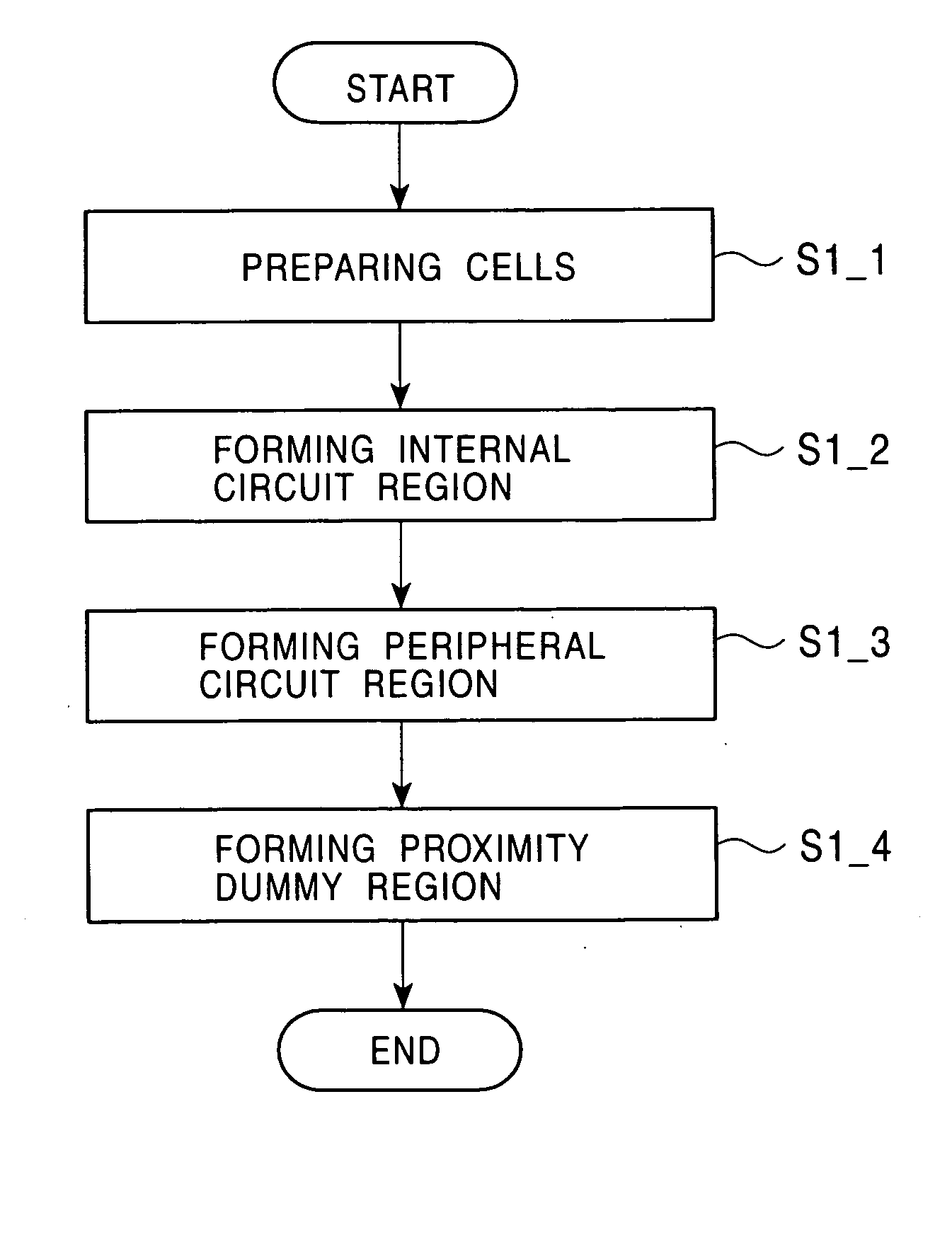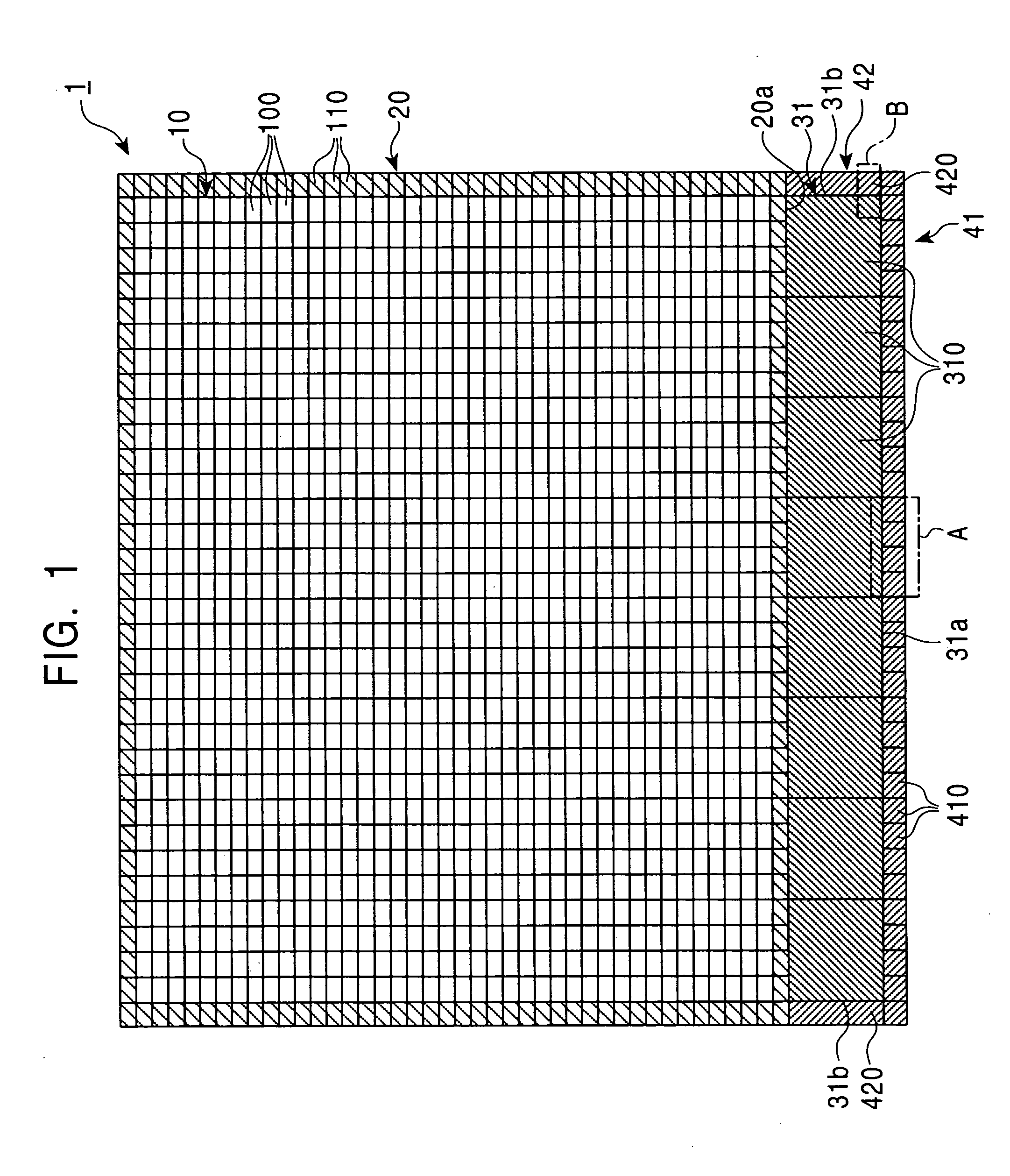Layout structure of semiconductor integrated circuit and method for forming the same
- Summary
- Abstract
- Description
- Claims
- Application Information
AI Technical Summary
Benefits of technology
Problems solved by technology
Method used
Image
Examples
Embodiment Construction
[0092] This invention was first disclosed in Japanese Patent Application No. 2003-344777, hereby incorporated by reference in its entirety.
[0093] Description will be made below regarding exemplary embodiments according to this invention with reference to the drawings.
[0094]FIG. 1 is a diagram illustrating the principal components of an exemplary layout structure 1 of a semiconductor integrated circuit according to an embodiment of this invention. In the layout structure shown in FIG. 1, a plurality of memory cells 100 are arranged in rows and columns to form a memory cell array 10, and dummy memory cells 110, having the same size as with the memory cell 100, are arranged along the perimeter of the memory cell array 10, whereby an internal circuit region 20 is formed. Also, first peripheral circuit cells 310 are arranged along the entire length of the lower side 20a of the internal circuit region 20, whereby a peripheral circuit region 31 is formed.
[0095] Exemplary proximity dummy...
PUM
 Login to View More
Login to View More Abstract
Description
Claims
Application Information
 Login to View More
Login to View More - R&D
- Intellectual Property
- Life Sciences
- Materials
- Tech Scout
- Unparalleled Data Quality
- Higher Quality Content
- 60% Fewer Hallucinations
Browse by: Latest US Patents, China's latest patents, Technical Efficacy Thesaurus, Application Domain, Technology Topic, Popular Technical Reports.
© 2025 PatSnap. All rights reserved.Legal|Privacy policy|Modern Slavery Act Transparency Statement|Sitemap|About US| Contact US: help@patsnap.com



